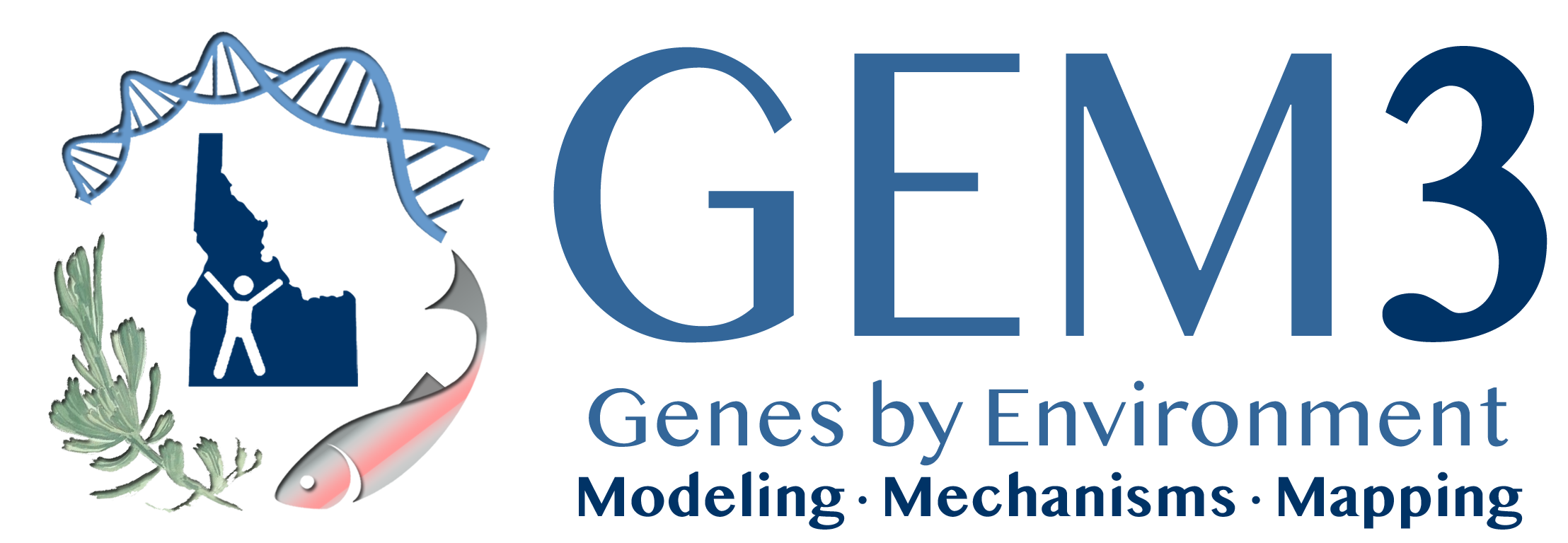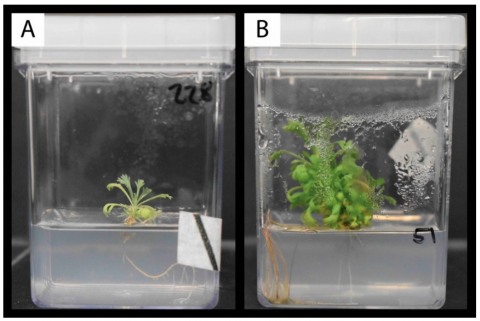Basin big sagebrush (Artemisia tridentata subsp. tridentata) is a keystone species of the sagebrush steppe, a widespread ecosystem of western North America threatened by climate change. The study’s goal was to develop an in vitro method of propagation for this taxon to support genome sequencing and genotype-by-environment research on drought tolerance. Such research may ultimately facilitate the reintroduction of big sagebrush in degraded habitats. Seedlings were generated from two diploid mother plants (2n = 2x = 18) collected in environments with contrasting precipitation regimes. The effects of IBA and NAA on rooting of shoot tips were tested on 45 individuals and 15 shoot tips per individual. Growth regulator and individual-seedling effects on percent rooting and roots per shoot tip were evaluated using statistical and clustering analyses. Furthermore, rooted shoot tips were transferred into new media to ascertain their continued growth in vitro. The results suggest that A. tridentata is an outbred species, as shown by individuals’ effect on rooting and growth. IBA addition was the most effective method for promoting adventitious rooting, especially in top-performing individuals. These individuals also have high survival and growth rates upon transferring to new media, making them suitable candidates for generating biomass for genome sequencing and producing clones for genotype-by-environment research.
Visual comparison of plantlet heights after 5 weeks of culture. (A) Plantlet grown from the shoot tip of G1_b20_1 individual belonging to the pink rooting cluster (see Figure 2). (B) Plantlet grown from the shoot tip of G2_b27_1 individual belonging to the blue rooting cluster (Figure 2). Note: leaf shape differs from that of adult individuals due to the in vitro growing environment and heterophylly between juvenile and adult development phases.
| GEM3 author(s) | |
| Year published |
2020
|
| Journal |
Plants
|
| DOI/URL | |
| Keywords |
Sagebrush
|
| GEM3 component |
Mechanisms
|
| Mentions grant |
Yes
|

